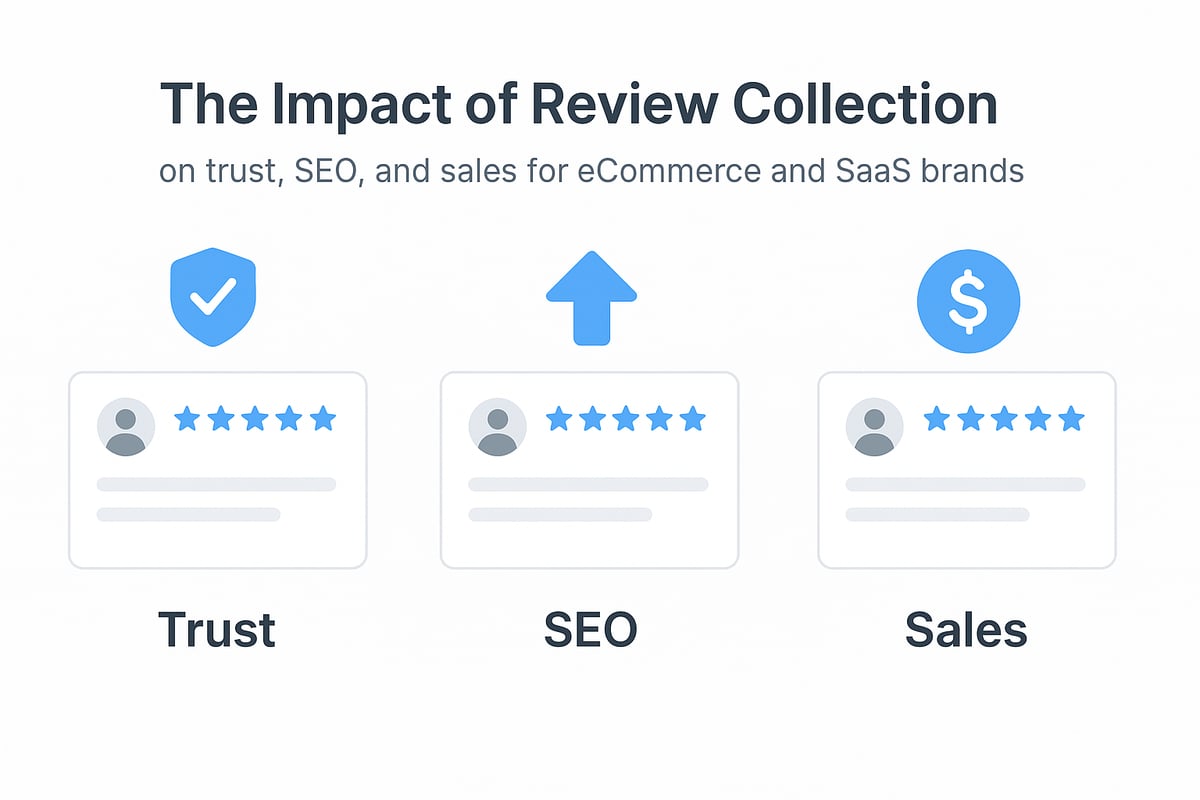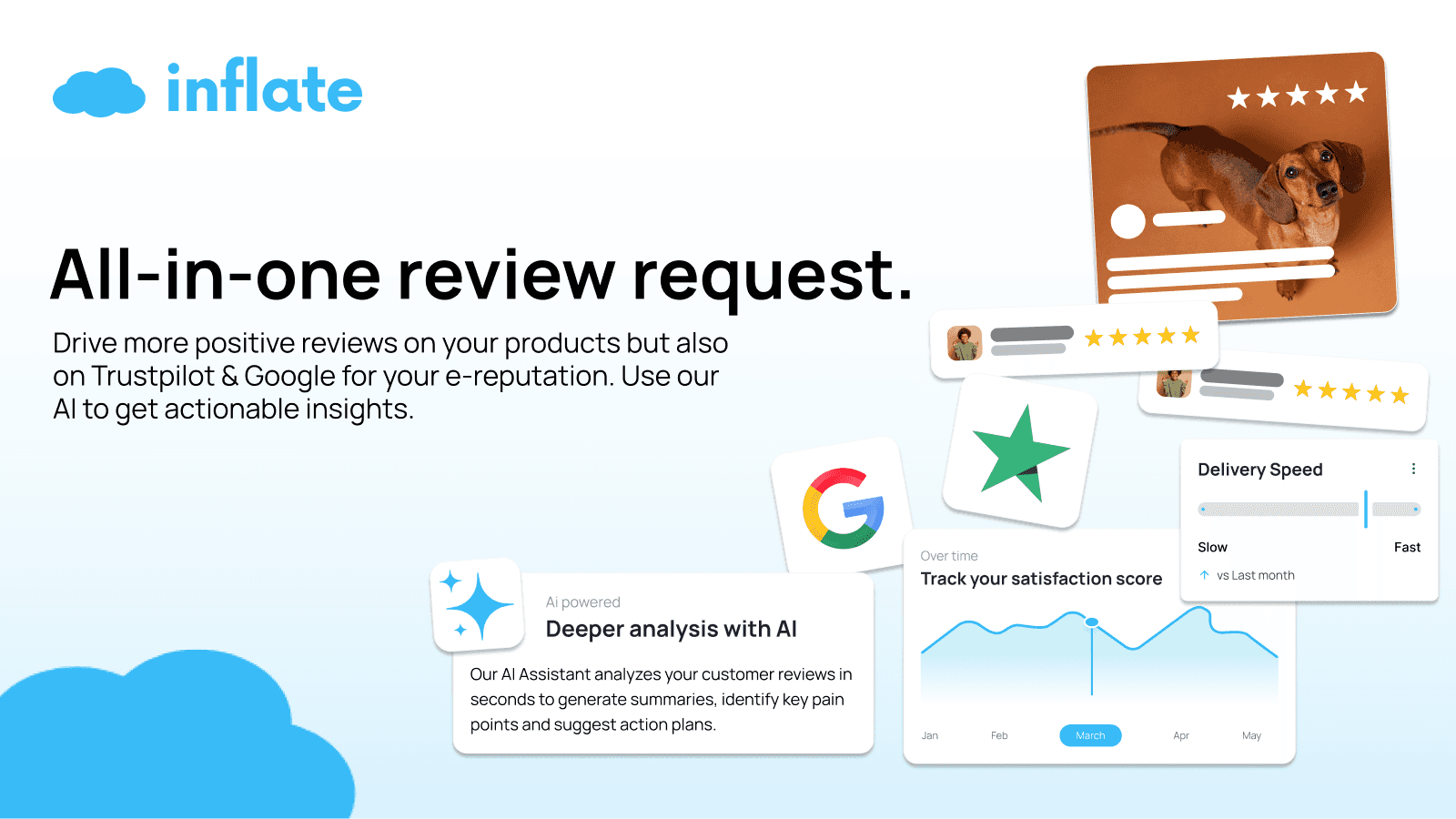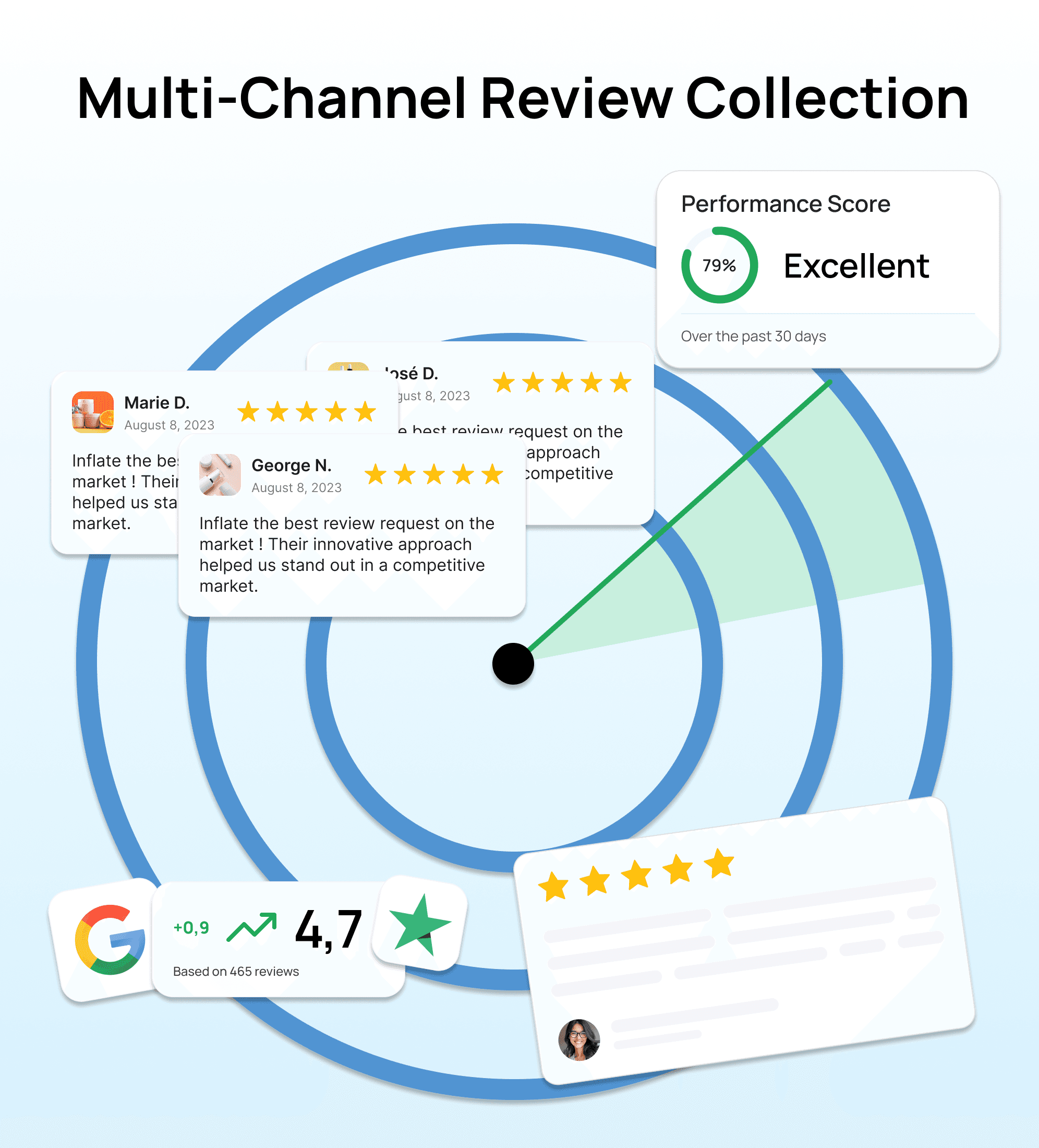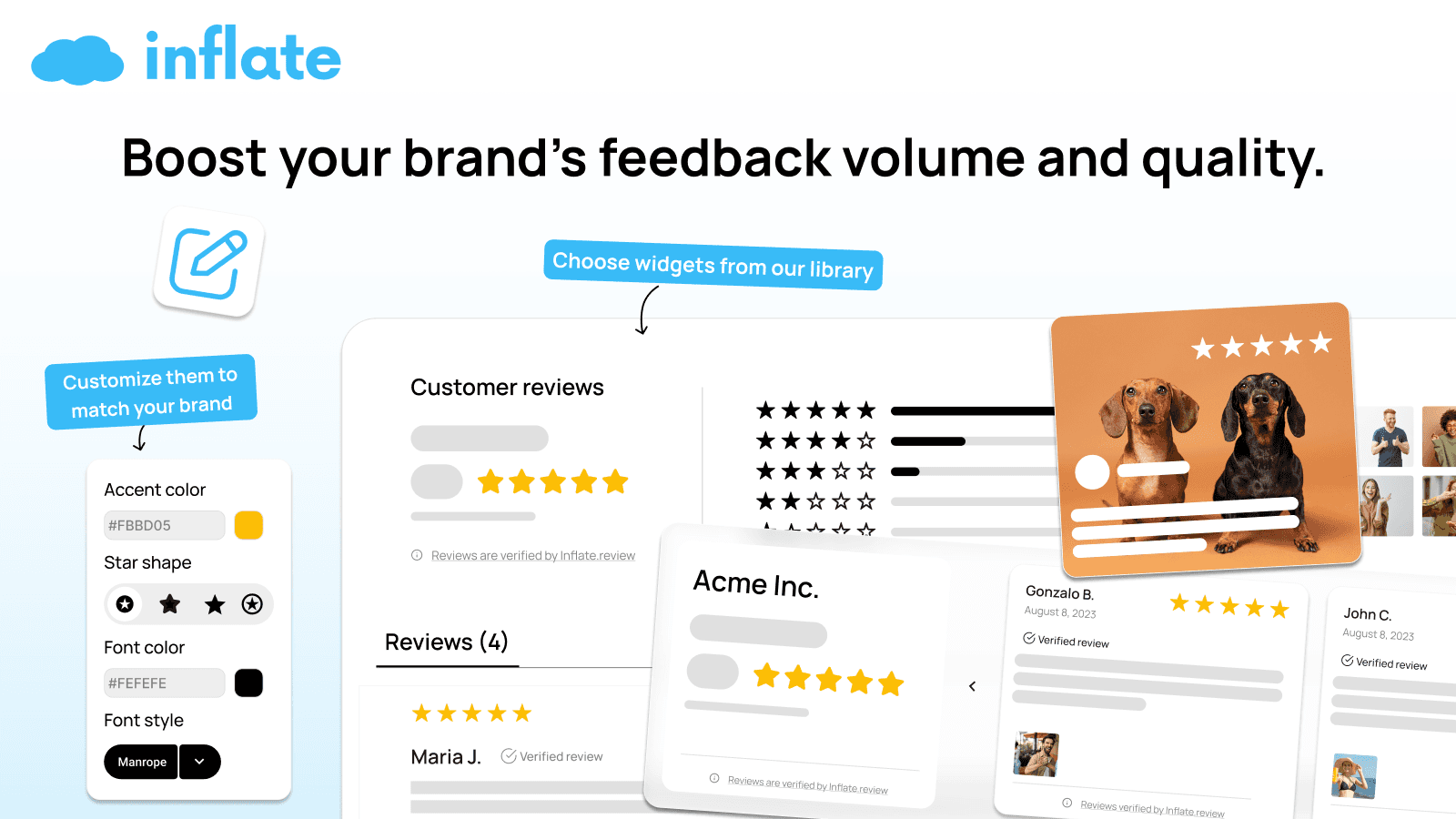The Ultimate Guide to Review Collection Success in 2025
October 11, 2025
In 2025, 98% of shoppers read online reviews before making a purchase. Is your business capturing that trust and turning it into real results?
This guide provides a practical, actionable blueprint for review collection that works across e-commerce, SaaS, and local retail. You will learn why reviews matter, how to build a strategic plan, select the right channels, and ensure a seamless user experience.
We address the biggest challenges, from compliance to automation, and offer proven tactics to help you scale authentic reviews. Ready to boost trust, sales, and insights? Dive in and transform your review collection strategy.
Why Review Collection Matters in 2025
Nearly every buyer now checks reviews before making a purchase. In 2025, 98% of shoppers read online reviews and 94% of purchases involve products or services with 4–5 star ratings. This makes review collection essential for building trust and boosting conversions. Social proof reduces hesitation and increases confidence, directly influencing buying decisions. For more detailed statistics, see the Online Review Statistics 2025.
Review collection also powers your SEO strategy. User-generated content (UGC) from customer feedback provides search engines with a steady stream of fresh, keyword-rich material. This increases your brand’s visibility in search results and helps you stand out in crowded marketplaces.
Brands with robust review collection programs see significant competitive advantages. More reviews lead to higher click-through rates and increased sales. For instance, Perry Ellis achieved a 25%+ boost in conversions after scaling their review initiatives, proving the direct business impact.
Beyond sales, review collection unlocks actionable insights into product and service quality. Customer feedback highlights strengths and areas for improvement, making it a continuous feedback loop that drives innovation and loyalty. Brands using this approach experience steady growth and a better reputation.
In 2025, prioritizing review collection is not just a marketing tactic, it is a core growth strategy. Companies that excel at gathering and leveraging customer reviews will lead in trust, visibility, and sales.

Building a Review Collection Strategy: Goals, Platforms & Routing
Creating an effective review collection strategy begins with setting clear objectives, selecting the right platforms, and designing optimized routing for feedback. By aligning these steps, businesses can maximize authentic review volume while maintaining compliance and efficiency.
Setting Clear Review Collection Goals
Start by defining what successful review collection looks like for your business. Establish targets for review volume, recency, and distribution between product and store reviews. Analyze competitors and industry averages to set realistic benchmarks.
Align your review collection KPIs with business goals, such as conversion rate, Net Promoter Score (NPS), and SEO impact. Setting measurable objectives ensures ongoing progress and accountability for your review program.
Choosing the Right Platforms
Identify where your customers seek reviews: Google, Trustpilot, Amazon, or niche sites. Each platform has unique benefits, including reach and credibility. Syndication services like Bazaarvoice, Yotpo, and Inflate help distribute reviews efficiently across channels.
Integrate review collection directly into your e-commerce stack, such as Shopify, WooCommerce, or Magento, for seamless workflows. For an in-depth breakdown, review the Online Review Platforms Analysis to understand which platforms influence your audience most.
Mapping the Review Routing Journey
Optimize review collection by mapping how feedback is routed. Satisfied customers, or promoters, should be encouraged to leave public reviews on Google or Trustpilot, while detractors are guided to private channels for resolution.
Leverage review management software to automate this routing, ensuring positive feedback builds your reputation and negative feedback is addressed constructively and discreetly.
Segmenting Review Requests
Segment your review collection requests for greater relevance. Target by product or store, geographic region, or customer lifecycle events. Trigger requests after purchase, support interactions, or milestones to ensure timing matches customer engagement.
Personalized segmentation increases response rates and generates more actionable, authentic feedback for your business.
Route Promoters to Google with Inflate
Inflate streamlines review collection by unifying product, merchant, and third-party platforms. Its AI-driven routing sends satisfied customers to Google or Trustpilot, while negative feedback is captured privately for follow-up.

Customizable widgets, real-time analytics, and built-in compliance tools make Inflate a smart choice for e-commerce brands aiming to scale review collection efficiently and ethically.
Multi-Channel Review Collection: Timing, Triggers & Execution
A winning review collection strategy relies on reaching customers where they are, at the right moment. Using multiple channels helps maximize participation, drive authentic feedback, and capture a representative mix of voices. Below is a quick comparison of the most effective review collection channels for 2025.

Channel Overview & Effectiveness Table
Channel | Conversion Rate | Effort | Cost |
|---|---|---|---|
High | Low | Low | |
SMS | Very High | Low-Medium | Medium |
QR Code | Medium | Low | Low |
Packaging Insert | Medium | Medium | Low |
In-store Kiosk | Medium-High | Medium | Medium |
The table above highlights how each channel supports review collection, balancing effort, and cost.
Email Review Requests
Automated post purchase emails remain the backbone of review collection. Send requests 1–7 days after delivery to capture fresh impressions. Personalize subject lines and content for higher open rates. For effective phrasing and timing, see How to ask for Google reviews.
SMS Review Requests
SMS delivers high open and response rates, making it a powerful channel for review collection. Always obtain explicit consent, and time messages during daylight hours. Keep texts brief, with a clear call to action and opt out option for compliance.
QR Codes & Packaging Inserts
Physical prompts boost in the moment review collection. Print QR codes on receipts, packaging, or displays, directing customers to a mobile friendly review form. This channel is ideal for unboxing experiences or in store purchases, encouraging immediate feedback.
In-Store & Offline Collection
For brick and mortar, provide kiosks or tablets at checkout, or add review links to receipts. Train staff to prompt satisfied shoppers. These methods capture spontaneous feedback and expand your review collection to offline buyers.
Social & Influencer-Driven UGC
Leverage social platforms like Instagram and TikTok to fuel authentic user generated content. Activate influencers, run sampling programs, or encourage ambassadors to share experiences. This multiplies reach and adds visual credibility to your review collection efforts.
Timing & Triggers for Maximum Response
The best moments for review collection are post purchase, after customer service interactions, or upon milestones like loyalty rewards. Automated triggers and segmentation ensure requests feel relevant and timely, boosting response rates across all channels.
Optimizing Review UX : Forms, Copy, Reminders & Friction Reduction
A seamless review collection experience can dramatically increase the volume and quality of feedback your brand receives. In 2025, optimizing every step of the review collection process is essential for boosting response rates, authenticity, and conversions. Let’s break down the tactics for forms, messaging, reminders, and friction reduction.

Crafting High-Converting Review Forms
Your review collection form should be mobile-friendly and require only essential fields. Use clear star ratings, open-text boxes, and easy options for adding photos. Add custom questions for rich insights, such as product fit or service experience. Strong review collection forms help customers respond quickly, increasing completion rates.
Writing Effective Request Copy
Personalize each review collection request. Use the customer’s name and product details to make your message relevant. Keep language concise and positive. Clearly state the value of their feedback, and if offering incentives, ensure they comply with review guidelines. Thoughtful copy drives higher engagement and trust.
Reminder Sequences & Follow-Ups
Automate reminder emails or SMS for customers who haven’t responded to your review collection request. Send the first reminder two to three days after the initial message, and a final nudge a few days later. Keep reminders brief, respectful, and easy to opt out of to maintain a positive brand experience.
Reducing Friction & Improving Submission Rates
Minimize steps in your review collection workflow. Use in-mail forms, one-click star ratings, and progress bars to guide users. Pre-fill known data like order number or product name. Reduce fields to the minimum required and use smart defaults to streamline the process for your customers.
Examples: 3 Email & 3 SMS Templates
Email Templates:
“Hi [Name], how did you like your [Product]? Share your feedback and help others.”
“Thank you for your purchase! Leave a review and earn loyalty points.”
“We hope you enjoyed your recent order. Tell us how we did.”
SMS Templates:
“Hi [Name], rate your [Product] experience: [link]”
“Quick favor—leave a review and help our small business! [link]”
“How was your order? Share a quick review: [link]”
Visual UGC: Photos & Videos
Encourage customers to upload photos or videos with their reviews. Visual content builds trust and increases conversion rates. Feature galleries and customer images on your site to showcase authentic experiences. For best practices on displaying collected content, see how to showcase reviews on your site for maximum impact.
Compliance, Moderation & Ethical Incentives in 2025
Staying compliant is essential for any review collection program in 2025. Regulatory bodies like the FTC and platforms like Google require that you avoid gating, filtering, or incentivizing only positive reviews. Every customer should have a fair chance to leave feedback, and incentives must be transparently disclosed. Always obtain explicit consent for requests, following GDPR, CAN-SPAM, and TCPA regulations.
Moderation is equally critical for review collection success. Use robust spam and profanity filters, and verify authenticity to prevent fake or misleading reviews. Respond to negative feedback both publicly and privately, showing accountability and a commitment to improvement. For practical advice on handling responses and compliance, see Manage Google reviews effectively.
Ethical incentives drive participation without risking penalties. Offer discounts or loyalty points only if all customers can participate, regardless of review sentiment. Never suppress negative feedback. In 2024, a global retailer faced fines for filtering out critical reviews, damaging trust and SEO. The lesson: prioritize transparency and fairness to future-proof your review collection strategy.
Product vs. Store Reviews, UGC, and SEO Schema
Product reviews focus on individual items, while store reviews capture the overall customer experience. Both play critical roles in a balanced review collection strategy, offering a holistic view that builds trust and credibility for ecommerce, SaaS, and local retailers.
User-generated content (UGC) such as photos, videos, and customer Q&A adds authenticity to review collection efforts. Visual UGC not only enriches your site but also influences purchase decisions by showcasing real user experiences. Integrating these elements increases engagement and signals transparency.
Structured data, or SEO schema markup, enables star ratings and snippets to appear in search results, directly boosting visibility and click-through rates. On-site display widgets and carousels further amplify these benefits. Brands have seen up to 30 percent higher conversions with review widgets. For actionable advice on leveraging reviews for SEO, see SEO and reputation management tips.
Automating Review Collection & Tracking KPIs
Automating review collection is essential for scaling feedback and saving valuable time. Smart triggers and workflows, powered by platforms like Inflate or Yotpo, enable seamless, multi-channel requests right after purchase or key customer interactions.
Unified dashboards centralize all review data, making it easy to monitor trends and take action quickly. With automation, you can track essential KPIs, including:
KPI | Why It Matters |
|---|---|
Review Volume | Indicates reach and impact |
Response Rate | Shows request effectiveness |
Average Rating | Reflects overall satisfaction |
NPS (Net Promoter) | Predicts loyalty |
Recency | Ensures reviews are current |
Source Mix | Reveals channel performance |
AI-driven insights analyze sentiment, spot product trends, and highlight areas for improvement. Benchmarking your review collection results against competitors helps you refine strategy and stay ahead.
For expert strategies on maximizing automation and KPIs, see these Collecting Customer Feedback Tips.
Brands harnessing AI for review collection have identified new product opportunities and improved customer satisfaction, proving the business value of a data-driven approach.
Common Pitfalls & How to Avoid Them
Even with the right intent, review collection can go wrong if you miss key compliance and transparency steps. Avoiding these pitfalls is crucial for building trust and maximizing the impact of your review collection strategy.
Common pitfalls in review collection:
Gating or filtering reviews, risking penalties and loss of trust
Over-incentivizing, leading to compliance violations
Ignoring negative feedback instead of using it for improvement
Poor timing or excessive frequency, causing low response or opt-outs
Not monitoring third-party platforms for new reviews
Lack of transparency or authenticity, which can hurt reputation
One real-world example is a brand that lost organic rankings after Google removed their review schema due to non-compliance. Staying updated on Online Review Trends 2025 helps businesses avoid these costly mistakes and keep their review collection efforts effective and compliant.
10-Step Checklist for Review Collection Success
Achieving excellence in review collection requires a structured, repeatable process. Use this 10-step checklist to drive authentic, high-impact results:
Set clear review goals and KPIs
Define targets for volume, recency, and platform distribution.Choose platforms wisely
Prioritize product, store, and third-party review sites relevant to your audience.Map the customer journey and triggers
Identify optimal touchpoints for review requests.Automate email and SMS review requests
Streamline outreach for consistency and scale.Optimize review forms and user experience
Keep forms mobile-friendly, brief, and easy to complete.Implement reminders and follow-ups
Send respectful, timely nudges to boost response rates.Route promoters to Google or Trustpilot, manage detractors privately
Protect your reputation and maximize positive impact.Monitor compliance and moderation
Ensure all review collection meets legal and platform guidelines.Analyze KPIs and iterate
Regularly assess review data for insights and improvements.Showcase reviews with widgets and schema
Display reviews prominently to increase trust and conversions.
Following these steps will help you build a robust review collection program that grows trust, improves SEO, and drives sales.
Mini Case Study: Scaling Reviews for Omnichannel Growth
Jane Iredale, a global cosmetics brand, set out to transform its review collection strategy for omnichannel growth. By automating review collection across email, SMS, and in-store prompts, they streamlined the process and increased efficiency.
The team encouraged customers to share visual UGC, such as photos and videos, and used AI-powered summaries to highlight key product benefits. This approach led to a 112% lift in review volume, improved NPS scores, and higher conversion rates.
Routing satisfied customers to Google amplified SEO impact, while private feedback reduced negative public reviews. The result: actionable insights, stronger trust, and a scalable review collection program any retailer can replicate.
Frequently Asked Questions (FAQs)
Looking to master review collection in 2025? Here are answers to the most common questions from ecommerce, SaaS, and local retailers.
How often should I request reviews from customers?
Request reviews after every purchase or key milestone, but avoid over-messaging to prevent fatigue. Most brands see success with one to two requests per order.What’s the best timing for review requests?
The optimal timing is 1–7 days post-delivery, ensuring the product has been received and experienced. For services, send requests shortly after the interaction.How can I encourage customers to leave reviews without violating guidelines?
Use fair incentives like loyalty points or small discounts, and always disclose them. Make the process simple and transparent to support authentic review collection.What review platforms matter most for SEO?
Google, Trustpilot, and industry-specific sites are crucial for visibility. Choose platforms where your customers research and where reviews can boost search rankings.How do I handle negative reviews effectively?
Respond promptly and professionally. Address concerns publicly, then resolve issues privately when possible. This shows transparency and a commitment to improvement.Can I automate review collection across channels?
Yes, modern tools let you automate requests via email, SMS, and more, streamlining the process and increasing response rates.What’s the difference between product and store reviews?
Product reviews focus on specific items, while store reviews reflect overall service. Collecting both gives a complete view of your customer experience.
Call to Action: Start Collecting Authentic Reviews at Scale
Unlock the full potential of your business with a robust review collection strategy. Building trust, boosting SEO, and increasing conversions all start with authentic feedback.
Ready to take the next step? Collect authentic reviews at scale—route promoters to Google with Inflate.
Start today by auditing your current review collection process, setting measurable goals, and implementing the proven tactics from this guide. Turn customer voices into your biggest growth driver.
You’ve just explored why collecting authentic reviews is so essential for trust, SEO, and conversions in 2025—and how the right strategy can turn every piece of feedback into a revenue driver. If you’re ready to put these insights into action and streamline your review collection with AI-driven tools, let’s take the next step together. I invite you to see how Inflate can help you route happy customers to Google, boost your online reputation, and unlock actionable insights—all from one dashboard. Ready to elevate your review strategy? Book a demo and start building trust at scale.
Keep exploring our blog
Actionable articles, case studies, and playbooks to turn ideas into results.









